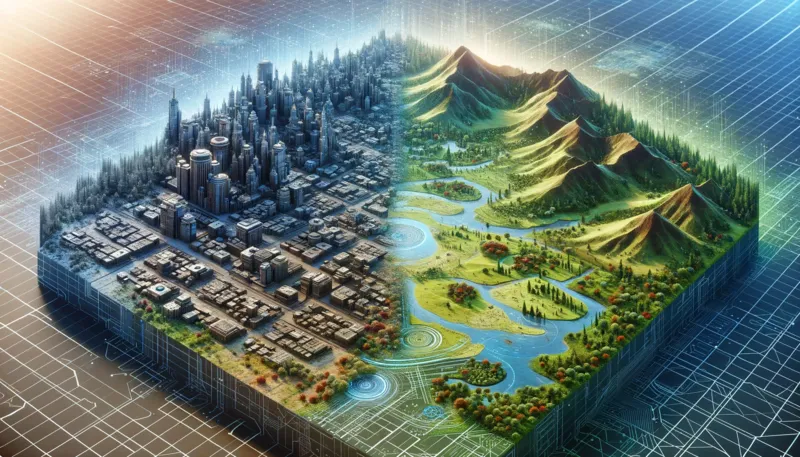Binary Space Partitioning in Terrain Generation for Epic Environments

In the evolving field of computer graphics, particularly within the realms of game development and simulation, terrain generation plays a crucial role. Binary Space Partitioning (BSP) emerges as a pivotal technique in this area. This article delves into the intricacies of BSP, exploring its application in terrain generation and its impact on creating complex virtual environments.
Understanding Binary Space Partitioning (BSP)
Binary Space Partitioning, at its core, is a method for dividing a space into smaller, manageable parts. Originally developed for computer graphics, it involves recursively subdividing a Euclidean space into two convex sets using hyperplanes as partitions. This subdivision creates a tree data structure known as a BSP tree, which efficiently represents objects within the space.
The Process of BSP in Terrain Generation
BSP operates by taking an area, termed a 'Leaf,' and splitting it either vertically or horizontally into two smaller Leafs. This process is repeated on these smaller areas continually until each reaches a minimum set size. This method is fundamental in generating game maps and simulating complex environments.
BSP in the Context of Terrain Generation
Terrain generation, a key requirement in computer graphics simulations like games and flight simulators, often employs methods like BSP. This approach assumes the availability of complete geometry data for rendering. In terrain generation, BSP facilitates the creation of detailed, varied landscapes, which are essential for realistic and engaging virtual environments.
Application in Urban and Complex Terrains
The use of BSP extends beyond natural landscapes to urban terrain modeling. Urban environments, characterized by their complexity, pose challenges for simulation and rendering. BSP's ability to model these environments efficiently makes it a valuable tool in urban terrain generation, helping to create realistic, intricate cityscapes for simulations and games.
BSP's Role in Hierarchical and Flexible Partitioning
BSP's recursive and hierarchical partitioning of space lends itself to a wide range of applications. It has been instrumental in developing urban spatial patterns and is now being extended to more general and flexible terrain generation. This flexibility allows BSP to be adapted for various types of terrain, from rolling hills to dense urban areas.
The Advantages of Using BSP in Terrain Generation
- Efficiency in Rendering: BSP trees help optimize rendering by organizing space in a way that makes it easier to determine what needs to be drawn.
- Flexibility in Design: The method allows for the creation of a wide variety of terrains, adapting to different design requirements.
- Enhanced Realism: Through careful partitioning, BSP can contribute to more realistic and immersive environments.
Challenges and Considerations
While BSP offers numerous benefits, it also comes with challenges:
- Complexity in Implementation: Setting up a BSP system can be complex, requiring careful planning and understanding of spatial structures.
- Performance Concerns: In large-scale environments, the efficiency of BSP can be a concern, particularly in real-time applications.
Conclusion
Binary Space Partitioning stands as a robust technique in terrain generation, offering a blend of efficiency, flexibility, and realism. As technology advances, its applications in various environments, from natural landscapes to complex urban terrains, continue to evolve, solidifying its place in the future of virtual environment creation.
